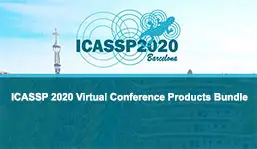Decoding Movement Imagination And Execution From Eeg Signals Using Bci-Transfer Learning Method Based On Relation Network
Do-Yeun Lee, Ji-Hoon Jeong, Kyung-Hwan Shim, Seong-Whan Lee
-
Members: FreeSPS
IEEE Members: $11.00
Non-members: $15.00Length: 14:21
04 May 2020
A brain-computer interface (BCI) is used not only to control external devices for healthy people but also to rehabilitate motor functions for motor-disabled patients. Decoding movement intention is one of the most signi?cant aspects for performing arm movement tasks using brain signals. Decoding movement execution (ME) from electroencephalogram (EEG) signals have shown high performance in previous works, however movement imagination (MI) paradigm-based intention decoding has so far failed to achieve suf?cient accuracy. In this study, we focused on a robust MI decoding method with transfer learning for the ME and MI paradigm. We acquired EEG data related to arm reaching for 3D directions. We proposed a BCI-transfer learning method based on a Relation network (BTRN) architecture. Decoding performances showed the highest performance compared to conventional works. We con?rmed the possibility of the BTRN architecture to contribute to continuous decoding of MI using ME datasets.



